You can trust Cyclingnews
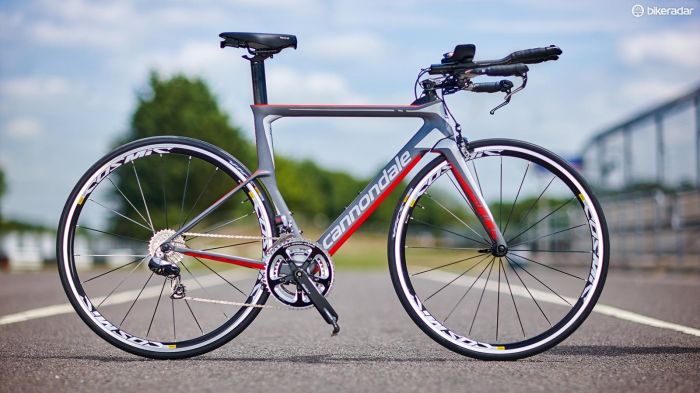
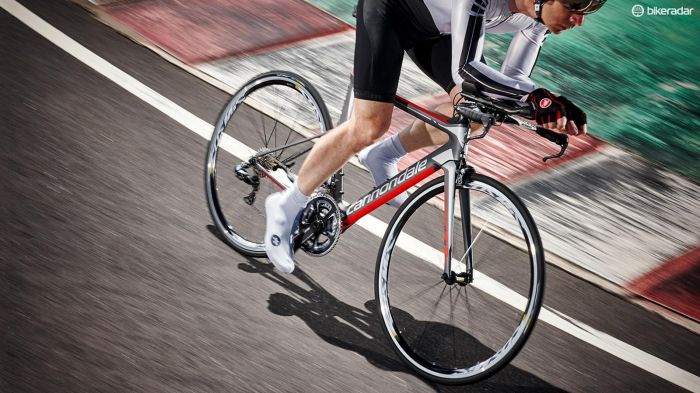
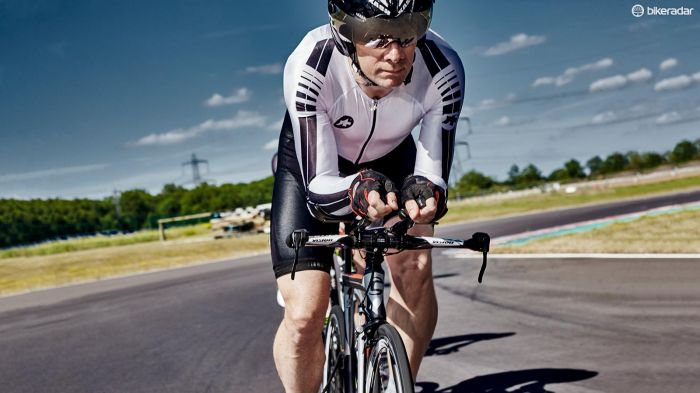
This article originally appeared on BikeRadar
The first thing to get to grips with on Cannondale's Slice is the Tritone saddle – with its truncated nose, it feels quite alien to anyone who's never tried one.
- Highs: Innovative frameset, easily adjustable cockpit with Dura-Ace Di2
- Lows: Tall front end, Tritone saddle takes some adapting to
- Buy if: You're looking for classy practicality above the lowest position at all costs
The initial feeling of being unsupported and wanting to push backwards for greater purchase soon passes, once you realise you're not about to slump onto the top tube, and as you settle in to the extensions, it all starts to make sense.
The reduction in unwanted perineal pressure is significant, and allows for a more extreme position than would often be comfortable on a normal length road saddle. There's still the 79-degree seat angle to contend with, but the seatpost has an alternative rearwards mount position.
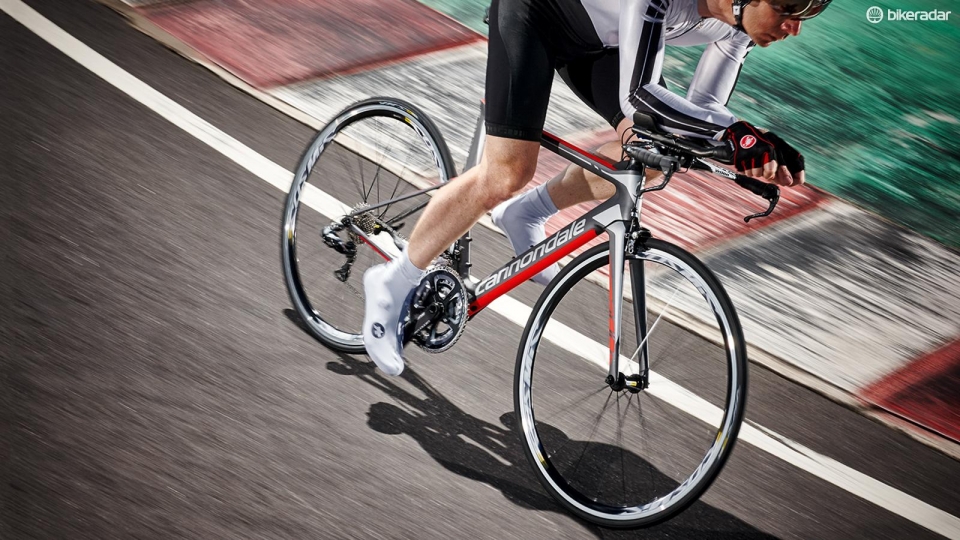
The front end is tall for a TT bike
That said, the Slice is a machine intended to be simple to set up and maintain, and in standard form doesn't cater for those looking for Wiggins-esque amounts of saddle-to-bar drop. On the base bar you feel quite upright, as the stem height is dictated by a tall conical headset top cap.
With a flush top cap and adaptation to the cable fairing behind it, you could get about 25mm lower, but in its supplied state it feels less aero. For starting efforts that's not a problem, once used to the short reach and slack 71.5 degree head angle, but when switching to the bar for cornering, it feels very exposed.
The arm rests are supportive, and it's useful to be able to adjust the extensions for width, we'd still prefer a lower position. With Di2 shifters on the tip of each extension, it's important to adjust their length so your hand doesn't rest on the buttons, causing accidental shifts, or maybe rotate them inwards to reduce the likelihood.
But Di2 feels absolutely right on a TT rig. On occasion we question its need on the road, but the ability to shift equally from the base or extension bar is a huge advantage, especially from the start line, accelerating out of corners or climbing.
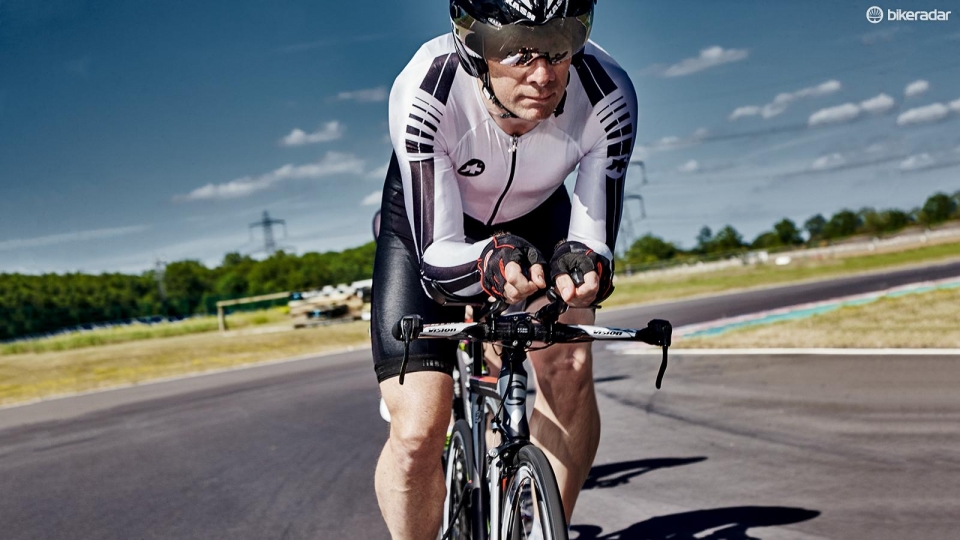
Di2 shifters on the bar extensions add a distinct advantage
With 52/36 rings supplied, the Slice has sufficient speed potential for almost everyone, and the smaller inner ring gives options for more sporting courses. Those from the Tony Martin school of gear mashing might turn their noses up, but for club riders the range is perfectly adequate.
The Slice is the more user-friendly than the Merida, Scott and BMC TT bikes we tested alongside it, and easier to adjust, but also the least like a conventional road bike in feel. It can certainly shift though – even though the Mavic Cosmic wheelset is fairly ordinary, it accelerates pretty quickly, and sustains speed well through false flats and long drags.
Overall mass doesn't count so heavily against a TT bike as an all round road machine, but the slim-tubed Slice is a full 0.5kg lighter than Scott's Plasma, and 1.2kg less than Merida's Warp TT, and with shallow rims is extremely nimble and very responsive to efforts. With some race wheels installed the weight shouldn't alter much, so you're left with a choice between practicality and sourcing some fast wheels, or a complete package with greater integration, better wheels and more involved mechanics.
Ride quality is pretty decent for a time trial machine, particularly at the back, where the Aero SAVE stays and tiny triangle allow for some bump-induced flex to soften the feel.
